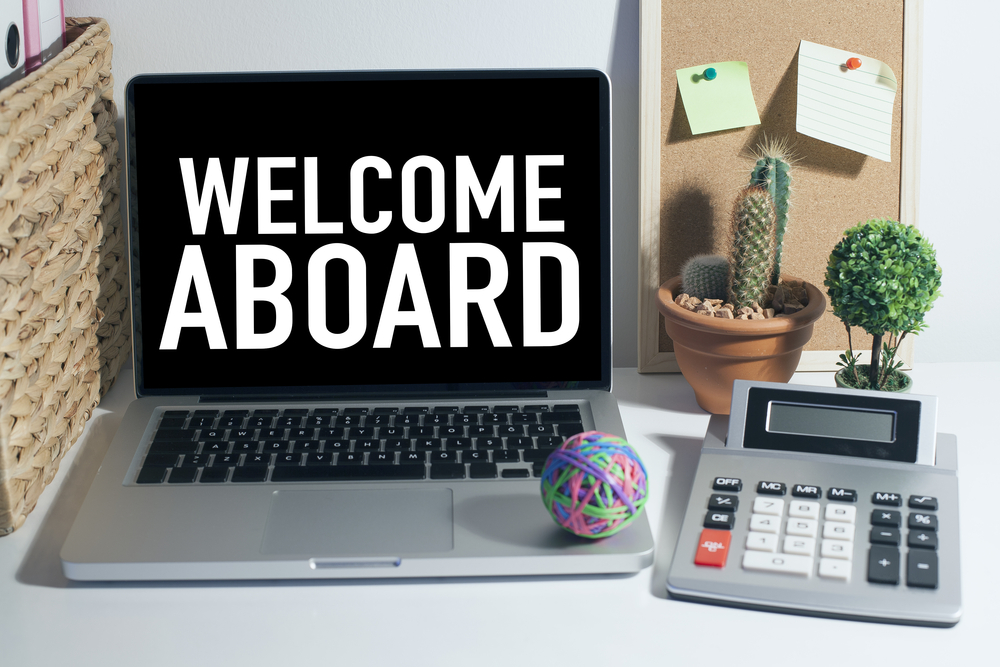Missouri Marketing Resource Blog

Onboarding Best Practices: How To Transition from Candidate to Employee

You have sifted through countless applications. You’ve conducted dozens of interviews. Now, you finally have the right candidate. They accept your job offer and together you set their start date, but now what? Do you play the waiting game until that first day, or do you schedule a time to check in with the candidate to keep communication open? Rather than letting the standard two weeks tick by without talking to your new recruit, we suggest you begin onboarding.
When you think of onboarding, your mind likely jumps to the necessary HR paperwork and operational steps in adding a new employee to your team. While these are important steps in the process, it can be easy to overlook the most important function of onboarding: creating a welcoming environment for your new hire.
The Benefits of Developing Your Onboarding Program
There are multiple benefits to developing your onboarding process, from alleviating first-day nerves to strengthening long-term retention. Onboarding is the first impression a previous candidate will have as a newly hired talent, and it’s a key determining factor in whether they decide their new role is a job or a career.
But is there actual concrete evidence that an onboarding program makes a true difference? A recent study from Forbes determined that 22% of employees end up leaving a company within 45 days of their start date due to a weak or nonexistent onboarding program. Onboarding is also an important window of time in keeping the momentum from the interview process into the job. Another study conducted by LinkedIn found that effective onboarding resulted in 11.5% higher employee performance overall.
There is also the unseen benefit of open communication that comes with onboarding. When you go more than a week of time without speaking with someone who will be joining your team, this can create feelings of apprehension in the candidate and leave a greater margin of uncertainty for you before their first day. By communicating regularly with new hires prior to their start date, you set a precedent for your conversations in the future.
For example, at Zimmer, we create this dialogue early on by matching each member of our team with a coach. This is oftentimes their direct supervisor with whom they will eventually schedule weekly one-on-one meetings. In this way, every member of our team has ample opportunities to meet and have an open dialogue with leadership.
Here are some additional onboarding best practices that will result in smoother transitions for both new hires and leadership.
Schedule a “Paperwork Day"
This is a simple way of alleviating your new hire’s first-day stress while also giving you the flexibility to cover anything you may not have had time to cover when you performed the job offer. You can plan for a day when they can come into the office to meet with human resources or the person who handles new hire paperwork. This opens up communication and provides an additional point of contact for their first day should they have any questions outside of training. This can also be an opportunity to familiarize them with their new workspace. At Zimmer, we utilize this time to give a thorough tour of the office so that any new team member can get acclimated while also introducing them to other team members they may not get to see on their first day.
Get Your Team Involved in a Welcome Lunch
Most companies will take a new team member out to lunch for their first day, but one key difference here is to involve the team. You have likely already spent much of the first morning going over training with your new employee, so this can provide a welcome change of pace to break up the day. Team welcome lunches also serve as a great icebreaker between co-workers, and can raise a new hire’s comfort level early on. We suggest sending out a notice email to the office at least one week prior to the employee’s start date to give your current team time to plan ahead and mark their calendars.
Plan a Shadow Day With a Current Employee
A shadow day is the perfect way to give your new hire a taste of what to expect in their role. You can schedule this prior to the start date with the current employee in their role, or this can be integrated into the interview process to gauge how a potential candidate might approach the role from an outside perspective. If you are having difficulty coordinating a day, you can easily split a shadow day into shadow “hours” scheduled throughout their first week.
This creates the additional benefit of keeping their training dynamic and engaging while giving them time with different team members. At Zimmer, we implement a shadow day into the interview process for each of our sales roles. This gives candidates the opportunity to observe what their job responsibilities would involve firsthand, as well as get feedback from a current salesperson on a potential coworker to gauge their fit for the team.
However, if you decide to develop your onboarding program, know that this process is an important tool in creating a positive first impression and setting the stage for stronger, long-term performance from every new hire. Whether you begin with an office tour or a simple meet-the-staff visit, keeping communication open is a key indicator of how any new team member assimilates with the team. Interested in learning more about employee retention and company culture? Subscribe to the Zimmer Radio and Marketing blog today!



